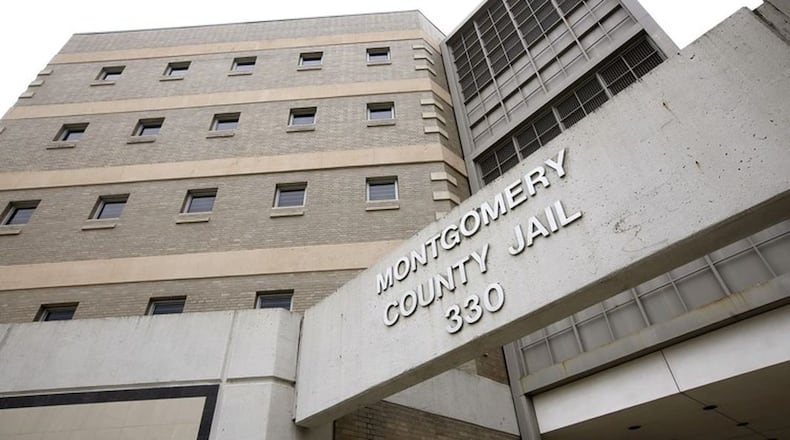County commissioners, the sheriff and county administrator said in a press release Thursday afternoon that they reached the decision to put plans on hold after receiving the report.
A new jail could cost $177 million to $202 million, according to estimates.
County leaders favor the option of an entirely new facility.
The current jail was built in 1964 with an addition in 1993. The state rates the county jail to hold 444 beds, but the number of inmates housed there has more than doubled that capacity in recent years.
HDR’s No. 1 option called for a new jail with 938 beds, divided into 464 general population beds and 474 special needs beds to care for those with medical and mental health needs, plus drug and alcohol addiction issues.
The current jail has only 12 special needs beds.
“A new, stand-alone jail with 938 beds would be ideal as it would ensure we have appropriate space to offer treatment and services for inmates who are awaiting trials,” Montgomery County Sheriff Rob Streck said in the statement. “It would also provide us with room to properly house more inmates should our population increase over the next few decades.”
A new jail was among recommendations to county commissioners made by the Justice Advisory Committee, formed in March 2017 in response to a raft of federal civil rights lawsuits alleging mistreatment of inmates.
While the county was waiting on the HDR report, a grassroots group called the Montgomery County Jail Coalition had been holding town halls and advocating for bail reform and alternatives to incarceration. The coalition was opposed to building a large new jail at the size HDR was looking at.
“The answer is not necessarily finding more money to build a giant jail. The answer is to create a local system of public safety where spending hundreds of millions of dollars to lock people up becomes unthinkable and unnecessary,” said Edwin Fuller, with the coalition.
Fuller said this is an opportunity for county officials to talk with local people and experts in alternatives to incarceration.
The sheriff said about 85% of current inmates have been charged with felony crimes, nearly 35% are being monitored for opioid withdrawal and 34% on psychotropic medications. Also, women represent 17% of the jail population, much higher than in the 1960s.
County Administrator Michael Colbert said officials asked HDR to design a jail for about 854 inmates. That lowered the cost by about $5 million.
“We still do not have that funding available, and we will not receive any additional funding from the state to help with jail improvements, so we are in a position where we have to put the plans on hold for now.” Colbert said.
Officials might use some of the funding that was allocated for the jail to modernize the current facility, but there are no plans for constructing a new facility at this time.
Colbert said that even if financing had been arranged, building a new jail in a time of COVID-19 would be a risk, when they may see lower sales tax revenue during the pandemic.
“It only confirms what we’ve been saying all along,” said Fuller, with the Montgomery County Jail Coalition. “A smaller jail saves taxpayers money in the short and long term. And it also happens to be a more humane and effective way of promoting public safety.”
Montgomery County will look for other funding sources. County officials said the community will be invited to contribute to future jail discussions if construction funding is identified and planning resumes.

